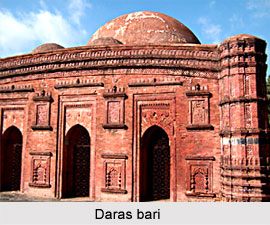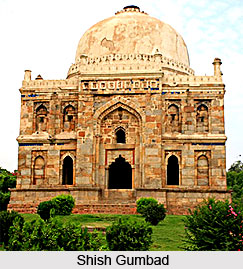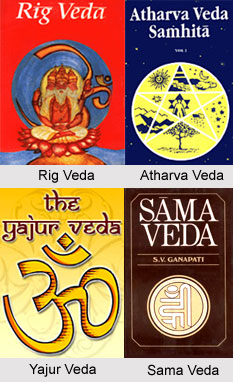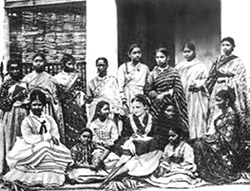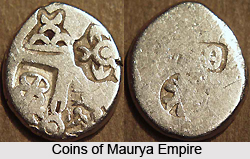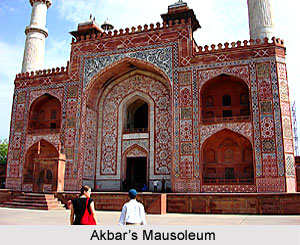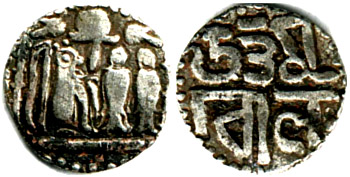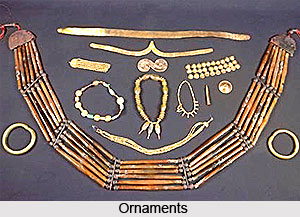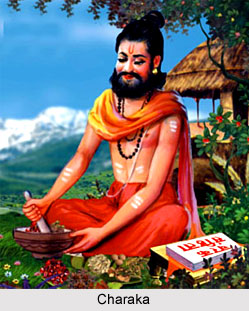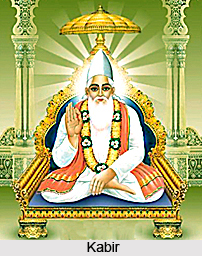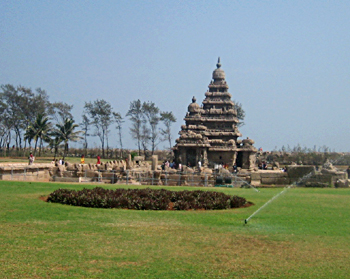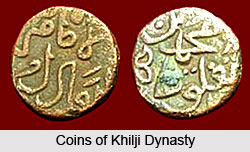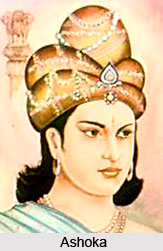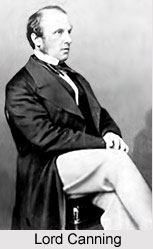 The issue of the greased cartridge in the usage of the new rifles, had made the Indian soldiers hugely unsettling. They gradually started to loose faith in their officers. As a result, incited and aroused from the core, they wanted to rise up and rebel against every issue at hand. Places like Kanpur, Lucknow, Delhi, Agra, Meerut, Calcutta, Barhampur, Danapur were already on their way, paving the revolt. The native army was thus touted as the `rebelling` gang.
The issue of the greased cartridge in the usage of the new rifles, had made the Indian soldiers hugely unsettling. They gradually started to loose faith in their officers. As a result, incited and aroused from the core, they wanted to rise up and rebel against every issue at hand. Places like Kanpur, Lucknow, Delhi, Agra, Meerut, Calcutta, Barhampur, Danapur were already on their way, paving the revolt. The native army was thus touted as the `rebelling` gang.
The conduct of the men of the 19th N. I. at Barhampur was known to the authorities in Calcutta on the 4th of March. To them it appeared to be rather the outcome of the blundering of the commanding officer, than of a prevalent feeling of discontent among the sipahis (soldiers). But, whatever might be the cause, it was a fact which they had to deal with, and to deal with promptly and with effect.
The Commander-in-Chief of the army, General Anson, was in the Upper Provinces; the Adjutant-General was at Mirath (Meerut); but the Governor-General, Lord Canning, and all the Secretaries to Government, were in Calcutta. These had, then, all the administrative means at their disposal for dealing swiftly and effectively with revolt.
The English had evidence of the terror, which the notion of the greased cartridge had spread throughout the minds of the sipahis since 22nd of January. It was that day on which the conversation of the lascar at the Dam-Dam factory with the Brahman sipahis had been reported to them. The general commanding at Barrackpur, General Hearsey, an officer who had passed his career in the native army, was capable of understanding the character of the sipahis, their language, and their idiosyncrasies. He had recommended that the difficulty might be met by allowing the sipahis at the depot to grease their own cartridges. The Government had caught at the idea, and on the 27th January the official sanction had been given to the suggestion. It was determined at the same time that, although many cartridges had been greased at Dam-Dam (present day Dum Dum), not one had been issued.
The Government then, according their sanction to General Hearsey`s suggestion, transmitted orders by telegraph to the Adjutant-General to issue to the several musketry-depots only cartridges free from grease, and to permit the sipahis to do the greasing themselves. But the concession of the Government of India had the effect of bringing into prominence the ignorance of the executive branch of the army. The Adjutant-General, a man who had served the greater part of his career with the sipahis, wired back that the concessions of the Government would incite the very suspicion they were intended to lighten; that for years past the sipahis had been using greased cartridges, the grease being mutton fat and wax; and that he begged that the system might be continued. The Government, the Military Secretary of which was equally an officer who had served with sipahis, raised no objection to this proposal. But they replied that the greased cartridges might be issued, provided the materials were only those mentioned by the Adjutant-General.
How the Adjutant-General managed to mislead the Government, and how the Government permitted themselves to be misled on this occasion, seems rather extraordinary. The Government had the fact before them that up to that moment no greased cartridges had ever been issued to the native army. That army still used the old `Brown Bess` musket, and for that weapon un-smeared paper cartridges were always utilised. It is true that a few regiments had rifle companies, or one company armed with rifles, and that, for facilitating the driving home of the bullet used with these, patches smeared with wax had been served out. No suspicion had ever attacked to these patches. But for the Adjutant-General to argue with the government about the usage of the greased cartridges, and the government in turn agreeing to his proposal, is an act of total absence of commonsense. It was sufficient to account for the many grave blunders that followed.
Such had been the condition of matters at the end of January. There had been sufficient displays of dissatisfaction to cause severe suspicions, and that was all. In those displays the Government had recognised no sign of widespread disaffection. There were but two men holding prominent positions in or near Calcutta who saw in the action of the sipahis something more than a passing wave of discontent. The more clairvoyant of these two men was Major Cavenagh, the Town-Major of Fort William, and the representative in that fortress of the Governor-General. The other was the Commander of the Presidency Division, General Hearsey.
The revelations of the lascar at Dam-Dam, in January, had deeply impressed General Hearsey. He recognised that the minds of the sipahis were in a state of great excitement. The factual cause, the basis of that excitement, was not apparent to him. His intelligence was limited to the matters which came under his eyes, and it was not in his nature to probe the situation more deeply. Hearsey really believed that the whole offence of the Government had been the greasing of the cartridges for use by the sipahis, and that the latter were under the influence of terror, lest their religion should be tampered with. He did not ask how it was that, before a single cartridge had been issued, before one sipahi had been asked to defile himself by applying his teeth to the greased paper. The conduct of the men of the four native regiments at Barrackpur had displayed unmistakable signs of the discontent which raged within their minds. Believing that the greased cartridge was the outward sign and inward cause of the evident discontent, Hearsey had, with the sanction of Lord Canning, on the 9th of February, paraded his brigade. There he addressed the sipahis of the four regiments in their own language, and had endeavoured to dispel their fears. He had told them that the English were Christians of the Book; that they admitted no proselytes except those whom the reading of that Book had convinced. Hearsey also strove to persuade them that the notion that any other mode of conversion was possible, was absurd; that baptism only followed conviction; and he implored them to dismiss from their minds about the tale told by scheming men that the English had any design to convert them by a trick.
General Hearsey meant well, and he thought he had succeeded in convincing his men of their delusion. But he had missed the point. The crusaders, who had stirred up the ill feeling of the sipahis all over India, had not informed their victims that the English would make them Christians by force. They had rather impressed on their minds that the object of their masters was to deprive them, by the compulsory use of the cartridges, of the caste, to which they adhered with a passionate conviction. General Hearsey`s argument that his religion was a religion of the Book was all very well when addressed to Brahmins and Rajputs, whose position was secure, whose caste was intact. But, when it should be applied to men whose caste had been broken who had become pariahs and outcasts, deprived of consideration in this world, it would have a different signification.
The answer to General Hearsey`s declamation was given by the 19th N. I. at Barhampur. The news from Barrackpur, carried to Barhampur by the sipahis of the 34th, had produced a huge unrest and partial outbreak. And this was the news which grossly vexed the Government of India on the 4th of March.
It was later found that the Government was in a state of some perplexity. Lord Canning was new to the country, and was by necessity, dependent on his military advisers on all matters pertaining to the native army. The capacity of his military advisers may be judged from the fact that they were the very men who had allowed him to be swayed by the shallow reasoning of the Adjutant-General regarding the issue of greased cartridges. However, many facts had spoken too loudly to be disregarded. There was the one fact that a native regiment in the Presidency Division had mutinied; another fact that the troops at Barrackpur had displayed a sulkiness of demeanour difficult to account for; a third fact in the revelations of Major Cavenagh, and a fourth in the fact that between Calcutta and Danapur, a distance of 344 miles from Calcutta, there was but one weak English regiment. The disaffection at Barhampur had, they knew, been produced by the communications received by the sipahis of that regiment from the men of a detachment which had marched there from Barrackpur. There was thus none to guard the line of 344 miles covering the stretch between Calcutta and Danapur. These facts, and this consideration, produced the conviction that it was necessary to strengthen the central position. The Britons resolved to strengthen it by ordering the 84th regiment to proceed with all speed from Rangoon (Yangon) to the Presidency. On the 20th of March that regiment arrived in Hooghly. Orders were then transmitted to Colonel Mitchell to march the 19th N. I. to Barrackpur.
But there had been many significant occurrences before the 84th reached Hooghly. Maharaja Sindhia had visited Calcutta early in March, and, as a return for the civilities showered upon him, had invited the elite of the society of the Presidency to the Botanical Gardens, situated on the opposite bank of the Hooghly River, on the 10th of the month. There can be little doubt but that the leaders of the crusade had resolved to strike their blow on that day. During the absence of the official English across the river they had planned to seize the fort and to strike terror into the town. A circumstance, slight in itself, frustrated their combinations.
Rain, most unusual during that time of the year in India, fell heavily the day before and on the morning of the 10th, and the Maharaja, aware that an out-of-door fiesta could be successful only when the weather was encouraging, sent out notices to postpone the entertainment.
It happened accidentally that no notice of the postponement reached the Town-Major, Major Cavenagh. That ever-vigilant officer had quitted the fort to cross the river; but, on arriving at the ghat, he learned for the first time that no fete would take place that day, so he retraced his steps. Cavenagh`s sudden return, and the rumour to which that return gave weight, that the fete had been postponed, roused in the minds of the mutineers the suspicion that their plot had been discovered. Some of them, outside the fort, had indeed begun the part assigned to them in the general programme. But, under the mysterious circumstances of the return of Cavenagh and the postponement of the garden party, the more judicious members of the conspiracy declined to move. They even assisted in the capture of their misled comrades, who were brought at once to trial, and suffered fourteen years of penal servitude for their premature impertinence.
A week later the 84th entered the Hooghly, and landing on the 20th, marched to the quarters allotted to them at Chunchura, twenty miles north of Calcutta. The Government immediately transmitted orders to Colonel Mitchell to march his regiment, the 19th N. I., from Barhampur to Barrackpur.
In the interval the Court of Inquiry, had taken evidence, and on its report the Governor-General in Council had resolved to punish the sipahis by dissolving the regiment. Previous experience of that punishment had proved that it was at best but an ungainly device. It was especially ill-adapted to the actual circumstances, for it would distribute over areas already partially infected a thousand men who regarded themselves, and would be regarded by others, as martyrs for their religion. No other remedy presented itself to their matter-of-fact British minds. So the order for disbandment was issued. It was hoped that the impressive ceremony of disbandment, carried out in the presence of four native regiments, and supervised by their English comrades, would produce a great effect. But, miserably for the theories of those in high places, an event took place at Barrackpur, before the arrival of the 19th there, which proved conclusively that the evil, which the disbandment of the 19th was to cure, was far more widely spread and deeply rooted than any official had conceived.


